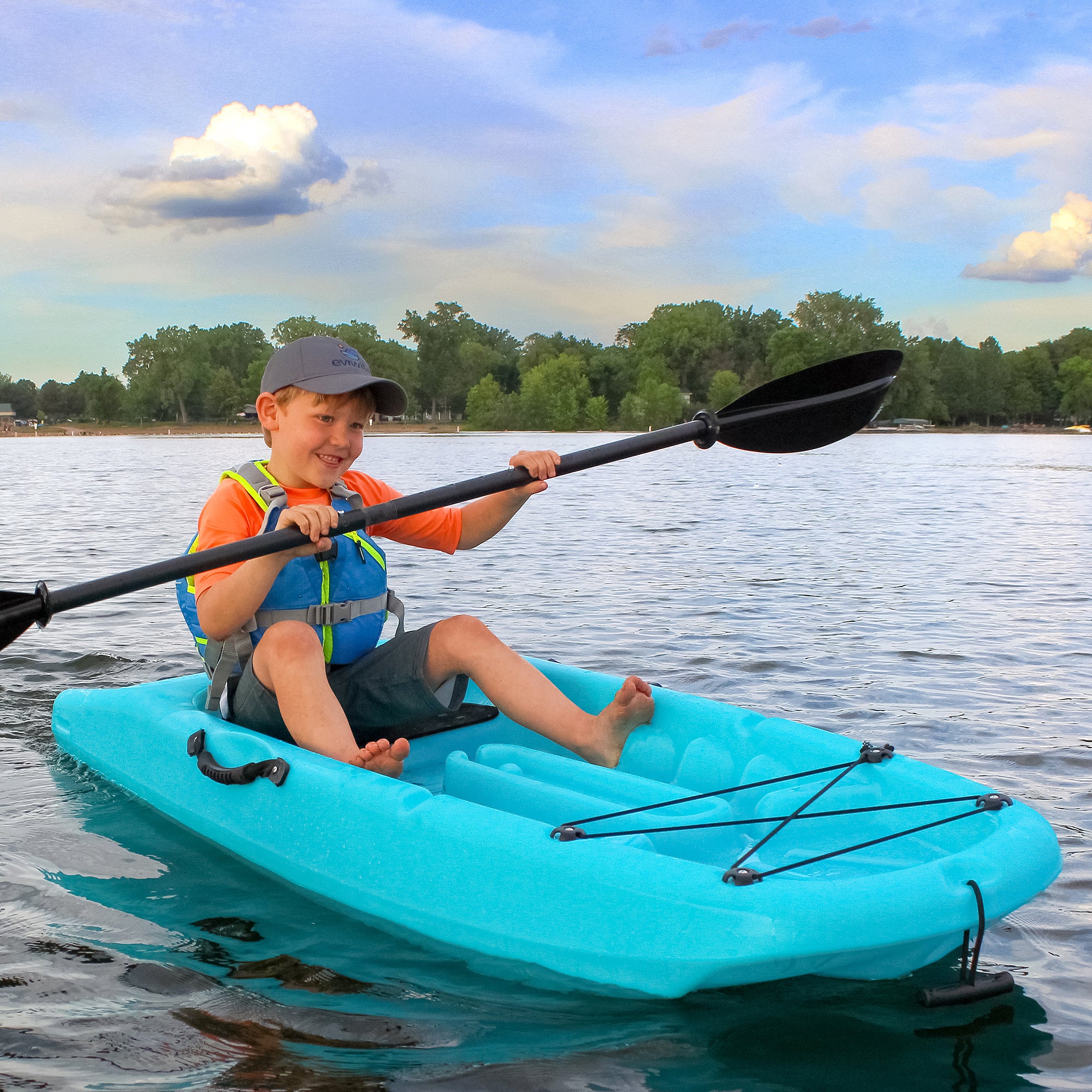Your Little Paddler’s Adventure: The Ultimate Guide to Choosing the Best Child’s Kayak
Hello, adventurous parents! Are you looking to introduce your child to the exciting world of kayaking but feel a little overwhelmed by where to start? Fear not! Whether you’re beach-bound, lake lounging, or river ready, we have crafted a comprehensive guide to help you navigate the waters of selecting the perfect kayak for your young one. Unpack those life jackets and prepare for splashes of fun as we dive into the essentials of a child’s kayak. ?
Why Kayaking is Great for Kids ?
Before we get into the nitty-gritty of kayak selection, let’s paddle through why kayaking is a fabulous activity for children. Not only does it enhance physical health through exercise, but it also improves mental well-being, encourages connections with nature, and fosters crucial life skills such as coordination and independence. So gear up and get ready to give your child an experience that blends fun with developmental benefits!
Understanding the Different Types of Kayaks for Kids
The right type of kayak for your child can make all the difference in their comfort and control on the water. Let’s explore the various options:
- Sit-On-Top Kayaks: Ideal for beginners and warm climates, these kayaks are stable, easy to get in and out of, and a breeze to maneuver. Perfect for those little explorers who might want to take a quick dip in the water now and then.
- Sit-Inside Kayaks: More suited for cooler environments, these kayaks offer protection from the elements. They are great for advancing paddling skills, and with the right safety precautions, can be a great step up from sit-on-top models.
- Inflatable Kayaks: Lightweight and easy to transport, these are fantastic for families on the go who lack the space for a rigid kayak. They do require careful handling to avoid punctures, but they make setup and takedown a snap.
Now that you’ve got the basic idea, let’s paddle further into what features to look for in a child’s kayak.
Key Features to Look For
When it comes to kayaks for kids, certain features are must-haves. Here’s what to keep an eye out for:
- Size and Weight Capacity: The kayak needs to be a good fit for your child’s size and weight to ensure that it’s easy to handle and provides optimal stability.
- Material and Durability: Look for kayaks made from durable materials that can withstand the inevitable bumps and scratches from adventurous outings.
- Safety Features: Safety is paramount, so opting for a kayak with a stable design, built-in buoyancy, and a secure sitting area is critical to keep your child safe on the water.
- Adjustability: Adjustable footrests and backrests can help tailor the kayak to your child’s comfort as they grow.
- Portability: Being able to easily carry and transport the kayak will save you a lot of hassle. Look for lightweight options, especially if your child will be handling it on their own.
Exploring the world of kayaking with your child opens up a treasure trove of learning and bonding opportunities. Ensure their first strokes are safe, enjoyable, and in the right kayak catered to their needs. With this guide, you’re well on your way to finding the best child’s kayak for a lifetime of aquatic adventures!
So, stay tuned as we delve even deeper into the specifics, including age-appropriate kayaks, pricing considerations, and essential safety tips for a splashtastic journey on the water. ?
Choosing the Right Kayak for Your Child’s Age and Skill Level
Getting the appropriate kayak for your child doesn’t only depend on their size but also on their age and experience. For instance, younger kids or beginners will benefit from wider, more stable kayaks as they learn to navigate and balance. As they grow and their skills improve, you can consider narrower, swifter kayaks more suited to their abilities.
Where you’ll be kayaking also plays a role in your decision. Calm lakes and ponds are ideal for start-up paddlers, while older, more experienced children may be able to handle gentle rivers. The key is to match the kayak to the water conditions you’ll most frequently face.
Choosing the right kayak for your child need not be a daunting task. With our guide, you’ll feel confident in finding a kayak that will lead to countless hours of fun and exploration for your little one. And remember, the best kayak is one that gets used – so don’t forget to sprinkle in plenty of enthusiasm and patience as your child learns this thrilling new skill. ?
Stay with us as we continue to unveil more savvy insights and recommendations in the next part of our guide, including safety protocols, the best accessories, and the importance of supervised training sessions! Let’s embark on this kayaking quest together and create ripples of joyful memories with our young paddlers!

5 Things Parents Should Know in Preparing for Their Child’s Kayak Adventure
Excitement is just around the riverbend as you prepare for your child’s kayak adventure! To ensure smooth sailing, here are five essential tips for parents:
1. Safety First: Life Jackets and Paddling Gear
Ensure your child is fitted with a properly sized life jacket, also known as a personal flotation device (PFD). This is non-negotiable when it comes to water safety. Additionally, equip them with suitable paddling gear depending on the weather conditions, such as wetsuits for cold water and sun protection for those sunny days out on the lake.
2. Kayak Practice and Training
Before taking to the waters, it’s crucial that your child feels comfortable in a kayak. This can involve practicing on dry land, teaching them how to hold the paddle correctly, and conducting capsizing drills so they know what to do in case the kayak tips over. Supervised training sessions can be arranged with an experienced instructor to build your child’s skills and confidence.
3. Establish Communication and Safety Rules
Openly communicate with your child about the importance of staying within sight and following safety rules. Establish a set of hand signals or whistles for staying in touch over distances where voices may not carry. Remind them not to paddle too far ahead and to be aware of their surroundings.
4. Choosing the Right Environment to Paddle
Initially, it’s best to choose a calm, flat body of water where your child can learn to paddle without facing strong currents or waves. As they become more comfortable and seasoned, you can gradually introduce them to different environments with varying levels of difficulty.
5. Fun and Encouragement
Nurture your child’s love for kayaking by encouraging them to have fun and explore. Praise their efforts, regardless of skill level, and make each kayaking expedition enjoyable with games and exploratory tasks. Keeping the experience positive will help foster a lifelong passion for this healthy and delightful activity!
Armed with knowledge and preparation, you and your young paddler are all set to embark on a wonderful kayaking journey. Stay attentive and supportive, and watch your child paddle with glee towards an adventure-filled horizon. Happy kayaking!
Finding the Best Deals: Budgeting for a Child’s Kayak
While scrimping on safety isn’t an option, finding the best deal on your child’s kayak is a balancing act between cost and quality. Shop during the off-season for discounts, consider slightly used kayaks from reliable sources, and look out for package deals that might include paddles and life jackets. Establishing a budget beforehand and sticking to it will steer you clear of overspending without compromising on the necessary features for a safe and joyful paddling experience.
There you have it, dedicated parents! With this guide, you’re well-equipped to choose the best child’s kayak and prepare for a myriad of paddling adventures that lie ahead. Happy kayaking! Keep exploring with us as we delve into further kayaking insights in our upcoming sections!
. For more information see here
Disclaimer
The articles available via our website provide general information only and we strongly urge readers to exercise caution and conduct their own thorough research and fact-checking. The information presented should not be taken as absolute truth, and, to the maximum extent permitted by law, we will not be held liable for any inaccuracies or errors in the content. It is essential for individuals to independently verify and validate the information before making any decisions or taking any actions based on the articles.




